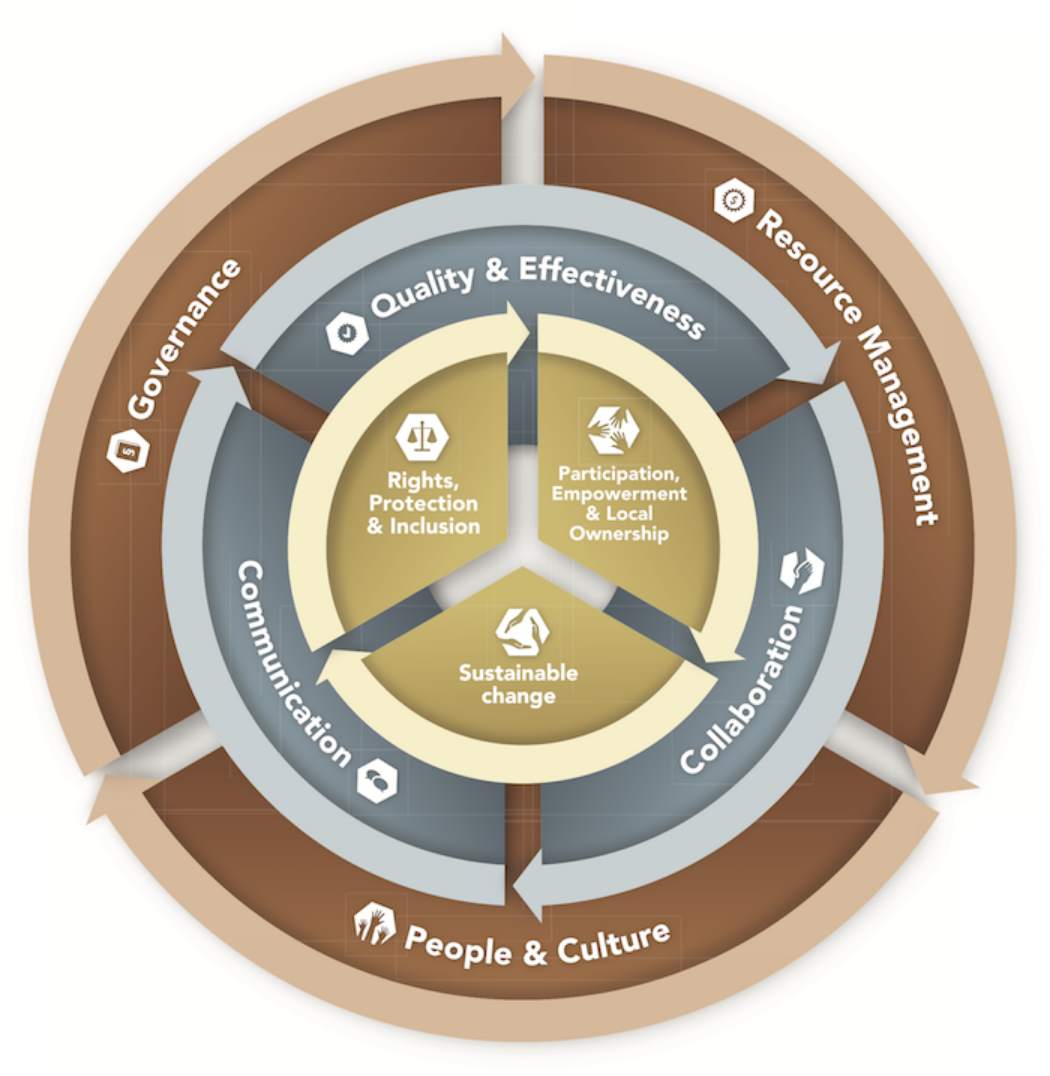Architecture of the Code
The Code is structured within nine high level Quality Principles. They describe high level principles of practice that, taken together, contribute to quality development and humanitarian action outcomes and increased stakeholder trust.
Conceptually, the Quality Principles are grouped into three clusters as shown in the diagram below. The central cluster of Quality Principles represents the approaches we take to achieve effective development and humanitarian outcomes. The middle cluster represents the processes that underpin our approaches outlined in the central cluster. The outer cluster represents the organisational systems, processes and policies which provide the enabling environment to implement the processes and approaches of the other clusters.
Conceptual Representation of Quality Principles

Each Quality Principle has a set of associated Commitments. The Commitments are the behaviours that apply directly to ACFID Members and to which ACFID Members commit. Each Commitment has associated:
- Compliance Indicators: These are pitched at a relatively high level of practice while still being achievable by the diversity of ACFID Members. Each of the Compliance Indicators has a Verifier which describes the evidence that is required to substantiate compliance. These Verifiers recognise the diversity of the ACFID Membership and the variety of ways that different Members will demonstrate their compliance. Members must meet the Compliance Indicators in order to be considered compliant with the Code.
- Good Practice Indicators: These describe a higher standard of practice than that set out in the Compliance Indicators. Members may work towards achieving the Good Practice Indicators over time. Members do not need to meet the Good Practice Indicators to be considered compliant with the Code.
Members deliver the Commitment by both complying with the relevant Compliance Indicators and working towards achieving the Good Practice Indicators over time. The Compliance Indicators, Good Practice Indicators and associated definitions and templates form part of the Quality Assurance Framework which is separate from but linked to the Code itself. The Code and its implementation by ACFID Members is further supported with the Good Practice Toolkit which provides additional guidance, examples of good practice, tools, templates and resources.



